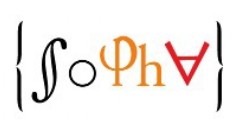We have a capacity to act with other human agents and a capacity to produce changes in inanimate objects. The central task of this project is to show that the latter is closely related to the former in being a form of joint agency. In doing so, I weigh in on debates about the nature of joint action and the limits of individual action.
On the first, I show that transaction—the intentional production of a change in an inanimate object—is a neglected form of joint action. Indeed, action is dual-natured in having both a psychological and a material dimension. In the purported prototypical cases of joint action, the participants contribute both psychologically and materially to the joint action. For example, in dancing the tango, the minds of both dancers direct the dance and the bodies of both dancers execute the dance. In joint action between a human agent and an inanimate object, on the other hand, the human agent contributes the directing practical thought, whereas the inanimate object contributes the concrete execution of that thought. For example, in opening a door, your practical thought directs the door's opening and the door executes your practical thought in opening. I argue that genuine joint action is consistent with such asymmetrical contributions from participants.
On the second, I defend that one's individual actions are restricted to changes in one's parts. Contrary to the competing Materialist metaphysics, one's individual actions do not extend to include changes in distinct substances. So when you intentionally produce a change in an inanimate object in your environment, the change in that object is not your action. But on the view that transactions are joint actions, we can vindicate the intuition behind Materialism that the change is nonetheless a manifestation of your agency: it is a joint action of which you are a participant.

 PDF version
PDF version
